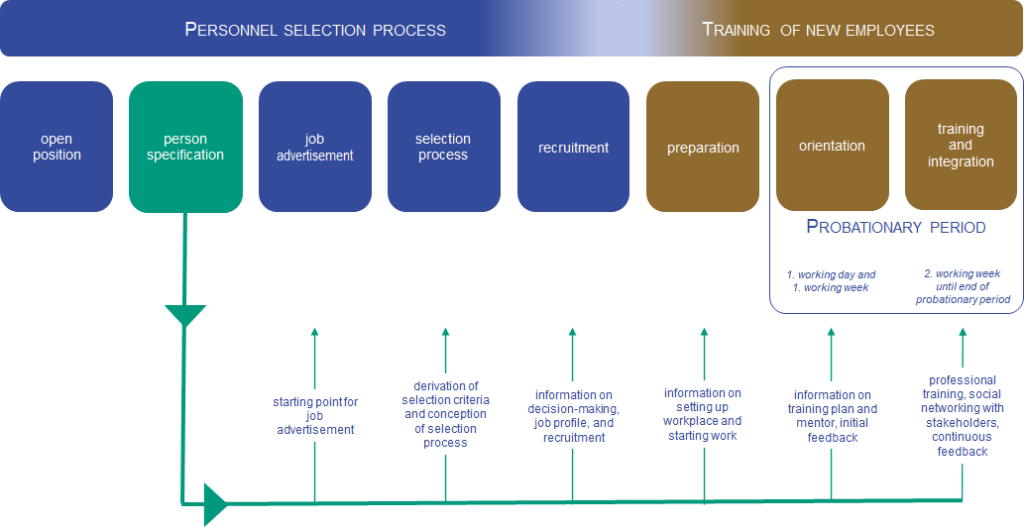Overview
In the practice phase, we will test out the new processes and documents with selected institutions, including central service centres and faculties.
- Kick-off dates represent current challenges in the search for and retention of new employees.
- The new processes provide support in meeting these challenges.
- Training courses and workshops communicate the new content and the new approach.
- User-friendliness is tested and improved where possible.
- Best-practice models are developed.
- Modularization and adaptation to different users is made possible.
- The process is geared toward applicants.
- New functions on the university intranet are developed and the processes digitized.
The main goals are:
- quick, efficient, and user-friendly selection processes
- more legal certainty
- recruitment of capable and likeable employees
- long-term retention of competent and committed employees
- consideration of candidate journey
Project Team
Personnel Selection
The new ‘personnel selection’ process conveys the advantages and simplifications of structured and diversity-oriented selection of employees. It also takes into account the obligations for public administration, such as objective, transparent, non-discriminatory, and, above all, legally certain processes.
The participating institutions receive support at every step of the process, from the intention to write a job advertisement to the successful onboarding of new employees. The core element is the person specification, which consistently forms the basis for decisions and measures until the end of the onboarding:

Both the job advertisement and the decision to recruit new employees are based on the person specification. After recruitment, it serves as the basis for the training plan, the planning of continuing education and annual performance appraisals, i.e., for the individual support and development of employees.
In the context of supporting the personnel selection process, the project team assists the respective institution with individual advice, but also with guidelines, checklists, and sample forms.
The advantage of the new process is that it guarantees the documentation and legal certainty of personnel selection when the documents provided are used.
Onboarding
The time after recruitment is an important phase for managers and new employees:
The manager must determine the professional suitability and individual team skills of the new employee and, if necessary, confirm the completion of a probationary period. A package of measures is available to support this process: a training plan, a mentor, discussions with colleagues, in-depth induction training by the manager and the team, or internal and external training courses.
This phase is accompanied by regular feedback meetings during the probationary period. Handouts and interview documents are also available for this purpose.
Guidelines and a checklist provide an overview of all tasks during this period. They also provide simple but effective tips for helping the employee to settle in comfortably. This includes a functioning and well-equipped workplace as a basis and a welcome gift as the icing on the cake.
Our analyses show that a poorly prepared workplace and negative experiences on the first day of work set the stage for early resignation by employees.
Outlook
If the results are good, the practice phase should lead to a roll-out. The practice phase already contains an important change process. Cherished routines must be abandoned in favour of current and effective procedures. Such changes do not happen according to a calendar or a project plan. To support these changes, the University of Freiburg can draw on a differentiated human resources development concept extending across the areas of staff recruitment, personnel development and retention, resignation and knowledge transfer, and management and strategy.
The new STEP 2024–2028 adds further measures to enable the development of modern structures in human resources administration and development:
- the university-wide development of management guidelines,
- the professionalization of training management,
- the development of succession planning and the start of individual career development, and
- digital expansion and further development of the training structure.
The roll-out of the newly designed personnel selection process and the structured induction training process professionalizes human resources management considerably and makes the University more attractive as a place to work.